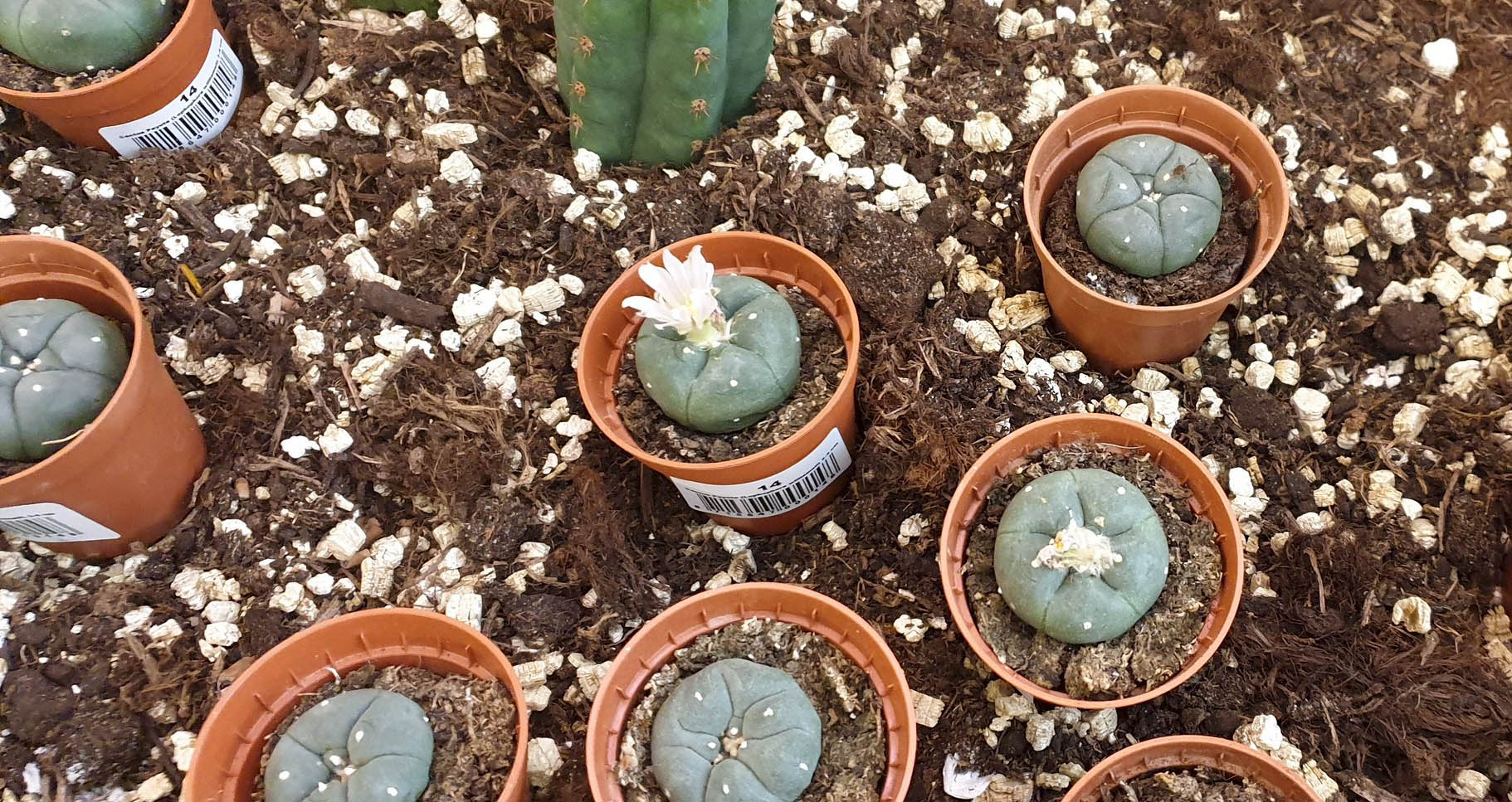The Secret of the San Pedro Cactus, Or the Rediscovery of Mescaline

PREMIUM CONTENT for MEMBERS ONLY
By Sarah Abedi, MD
Mescaline also known as 3,4,5-trimethoxyphenethylamine is a psychedelic compound found in the fast-growing San Pedro cactus, Trichocereus pachanoi, Peruvian torch cactus Trichocereus peruvianus as well as the spineless ground-hugging cactus Peyote, Lophophora williamsii). These cacti are native to South America, Mexico and the southwest United States.1
The psychoactive mescaline is found on the button-shaped seeds or fruit that is on the outside of the cactus. The seeds or fruit is then removed and dried and subsequently eaten whole or in tea form. Mescaline binds to nearly all serotonin receptors in the brain and is structurally similar to LSD. Mescaline can also bind to dopamine receptors.2
Mescaline has been an integral part of religious ceremonies for countless indigenous tribes. Although mescaline is classified as a Schedule I controlled drug, peyote is used by Native Americans freely in the United States due to the 1994 American Indian Religious Freedom Act.3
Mescaline effects are generally felt within 45-90 minutes and can last from 10-12 hours and can produce altered states of consciousness with visual hallucinations and alteration in the experience of time being commonly reported. Recurrent visual patterns and intensely brilliant colors are noted by many who have ingested the substance. Mosaics and spirals have been reported to morph into sentient beings. As with LSD, synesthesia can occur especially with music.4
Mescaline has been used by many notable figures. Ken Kesey, the author of One Flew Over the Cuckoo’s Nest reports taking peyote prior to writing his novel. Aldous Huxley describes his experience with mescaline in the essay The Doors of Perception. Users of mescaline report a sensation of interconnectedness with the universe as well as a deep sense of gratitude and compassion for fellow beings. Studies in mescaline have shown people experience greater inner strength and wellbeing. In another study where fish were given mescaline, the result showed the fish learning how to avoid a shock more quickly.5
During World War II, mescaline was infamously used by the Nazis on concentration camp prisoners. Nazi physician Kurt Plotner attempted to use mescaline as a way to extract information.6The US Office of Strategic Services was also testing mescaline’s potential role as a “truth drug” at the same time. The nausea however proved an impetus to trusting their interrogators. Plotner was then recruited later by the CIA in the infamous mind-control program MKUltra.7
There is no current research that suggests mescaline causes any form of addiction. Studies show that mescaline increases blood flow and activity to the pre-frontal cortex- a higher processing area of the brain responsible for problem solving as well as emotional and behavioral regulation.8 Low activity in the pre-frontal cortex has been linked to depression and anxiety. Peyote is therapeutically used for depression amount Native American tribes. Research suggests this antidepressant effect may be linked to participants willingness to face themselves and relive and process repressed memories.
As we further explore this psychedelic renaissance, we will likely come across more research investigating potential therapeutic effects. The importance of set and setting remains integral to a positive mescaline experience as well as a collective shift in societal perception of particular psychedelic substances. There appears to be a wisdom in some plant medicines that ancient civilizations have harnessed for centuries, and the time may be coming for modern civilization to continue that exploration.
References
- Dinis-Oliveira RJ, Pereira CL, da Silva DD. Pharmacokinetic and Pharmacodynamic Aspects of Peyote and Mescaline: Clinical and Forensic Repercussions. Curr Mol Pharmacol. 2019;12(3):184-194. doi: 10.2174/1874467211666181010154139. PMID: 30318013; PMCID: PMC6864602.
- Cassels BK, Sáez-Briones P. Dark Classics in Chemical Neuroscience: Mescaline. ACS Chem Neurosci. 2018 Oct 17;9(10):2448-2458. doi: 10.1021/acschemneuro.8b00215. Epub 2018 Jun 8. PMID: 29847089.
- The American Indian Religious Freedom Act, Public Law No. 95-341, 92 Stat. 469 (Aug. 11, 1978) (commonly abbreviated to AIRFA), codified at 42 U.S.C.
- Kovacic P, Somanathan R. Novel, unifying mechanism for mescaline in the central nervous system: electrochemistry, catechol redox metabolite, receptor, cell signaling and structure activity relationships. Oxid Med Cell Longev. 2009;2(4):181-190. doi:10.4161/oxim.2.4.9380
- Kyzar EJ, Collins C, Gaikwad S, et al. Effects of hallucinogenic agents mescaline and phencyclidine on zebrafish behavior and physiology. Prog Neuropsychopharmacol Biol Psychiatry. 2012;37(1):194-202. doi:10.1016/j.pnpbp.2012.01.003
- Sterkowicz S. The SS physician Kurt Friedrich Plotner, experimenter at Dachai. Przegl Lek. 1988; 45: 73-78.
- Passie T, Benzenhofer U. MDA, MDMA and other “mescaline-like” substances in the US military’s search for a truth drug. Drug Test Anal. 2018;10: 72-80
- Vollenweider FX. Brain mechanisms of hallucinogens and entactogens. Dialogues Clin Neurosci. 2001;3(4):265-279. doi:10.31887/DCNS.2001.3.4/fxvollenweider
 Sarah Abedi, MD is an emergency medicine doctor practicing in Southern California. She completed her medical school at UC Irvine and finished her emergency medicine residency at Harbor UCLA. Her medical interests lie in the science of disease prevention which motivated her to create The Hidden Body Podcast.
Sarah Abedi, MD is an emergency medicine doctor practicing in Southern California. She completed her medical school at UC Irvine and finished her emergency medicine residency at Harbor UCLA. Her medical interests lie in the science of disease prevention which motivated her to create The Hidden Body Podcast.